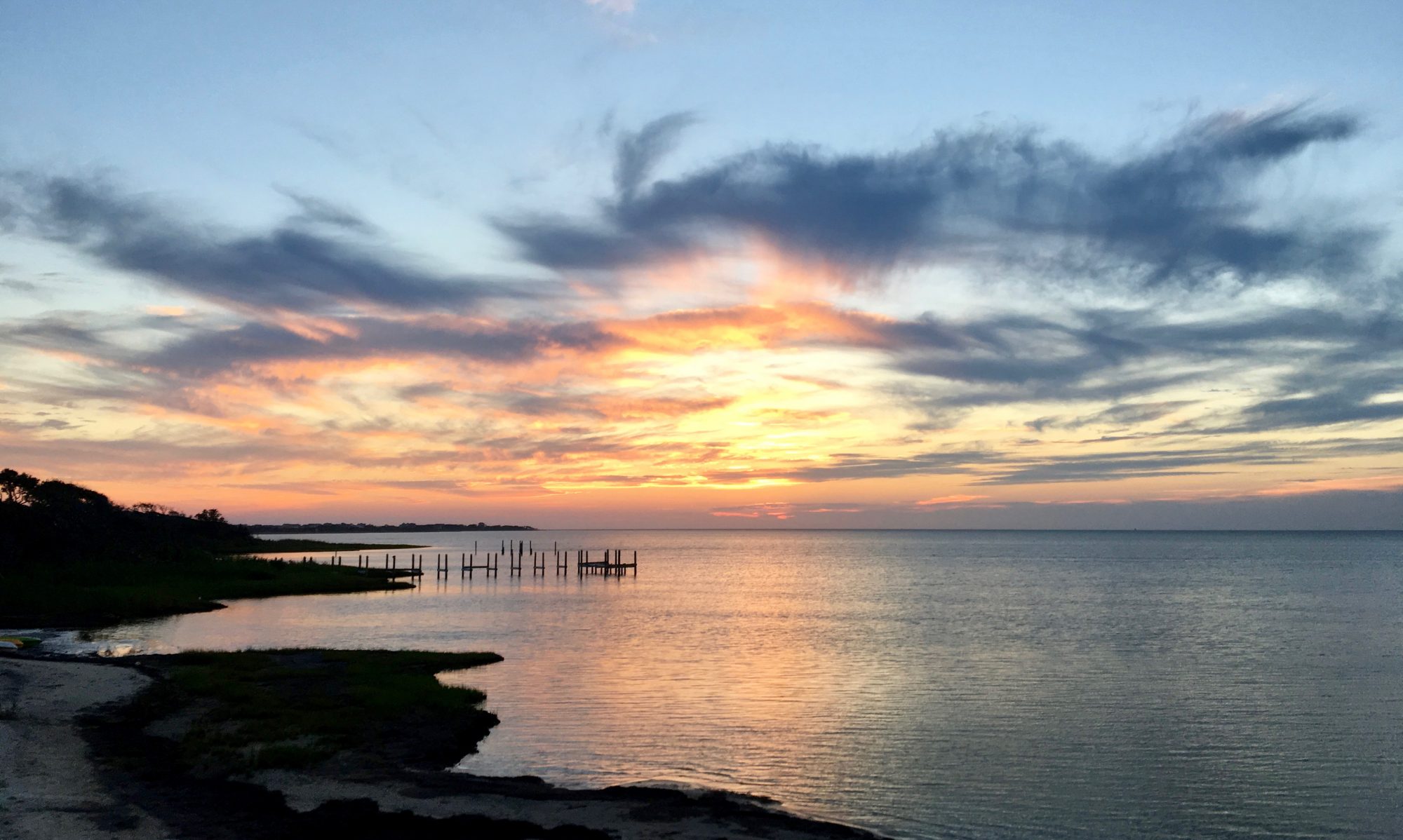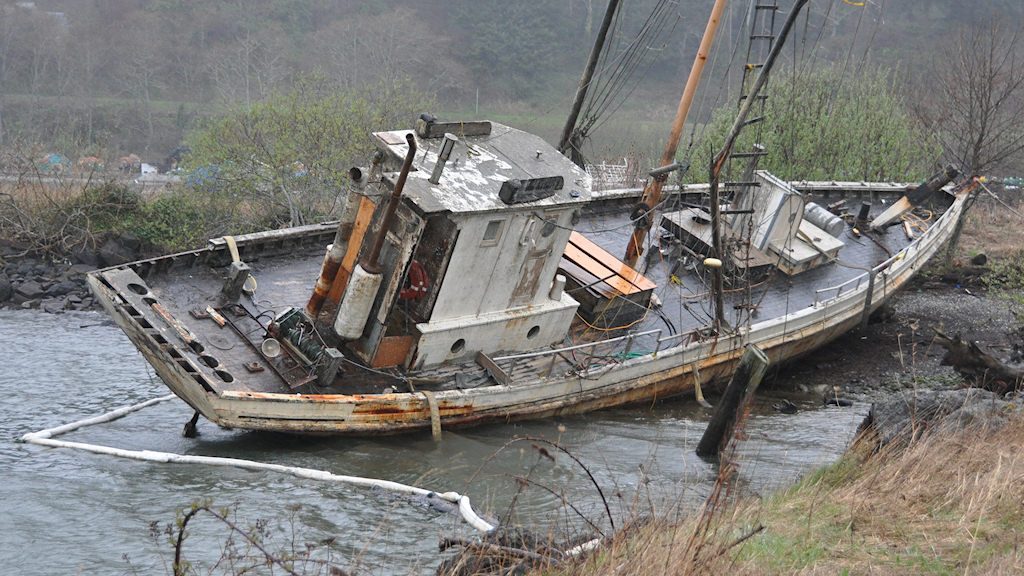By: Meg Gardner, Environmental Programs Coordinator for the Oregon State Marine Board (TCS Communications Subcommittee Member).
When most people think of marine debris, they think old fishing gear, plastic bags, or cigarette butts. But another category of debris exists that challenges coastal managers throughout the U.S. – abandoned and derelict vessels (ADV’s). This term covers anything from a 10-foot aluminum dingy left on a public boat ramp all the way up to a 100-foot former commercial fishing vessel with barrels of unknown hazardous materials onboard and anchored out on a river. Typically, an abandoned vessel is defined as one that has been left without authorization on public or private lands, and a derelict vessel is one that is sinking, sunk, leaking pollution, or a threat to public health and safety.

Vessels become abandoned and/or derelict for many reasons, which can vary from state to state; however, most states still share many similar challenges when it comes to preventing and removing these vessels. For example, keeping track of ownership of a vessel as it changes hands between people can be difficult, especially if new owners do not know the registration or titling requirements of their home state. Most people do not think about the end of their vessel’s useful life when they first buy a boat. As a vessel ages and does not receive the maintenance it needs, it can become a liability. New owners with “boat dreams” may buy a secondhand vessel and do not fully realize the amount of money or skill required to make a vessel run well again. These situations can lead to more boat ownership transfers and eventually abandonment.

Abandoned and derelict vessels are a concern for many reasons. They can impact the environment through petroleum spills, leaks of hazardous materials or sewage, and they can break apart and become debris fields. These vessels can also impact navigation and safety if they are drifting freely or lurking just under the water out-of-sight. They might be beached near shore where they prevent water users from accessing certain areas. Likewise, these vessels can become a site of illegal activity such as dumping or drug use, especially if they are in remote or rural areas.
In Oregon, once a vessel has been identified as abandoned or derelict, an enforcement agency (such as a law enforcement body or public agency) can start the seizure process, which can lead to removal, storage, and disposal of the vessel. The last known registered owner remains responsible for an abandoned or derelict vessel and liable for any costs incurred by the enforcement agency for removal. However, if the State does not have enough funding to front the costs of removal and disposal, a boat may remain where it is for years, especially because most owners do not have the resources to pay for a boat’s removal or are unknown because its ownership is difficult to trace.

Depending on the size, hull material, location, or debris onboard a vessel, removal can be a challenging and expensive process. Large vessels, commercial vessels, vessels with steel or concrete hulls, or sunken vessels are examples that can cost a significant amount of money to remove and dispose. The average cost of an abandoned recreational boat (under 30ft) is about $3,500 in Oregon, while some vessels that the State has yet to remove are estimated to cost several thousand or hundreds of thousands of dollars. In some cases, there are known derelict vessels that may cost several million dollars to remove, which far exceeds the current budget allocated to these removals and would take a special allocation of funds from the state or federal legislature.
Obviously, not having a funding stream proportionate to the problem is a common challenge for most states. Having appropriate legislation or an established ADV program are also important in being able to combat the issue of abandoned and derelict vessels. Oregon’s ADV legislation and program were established in 2004. An update in 2013, streamlined the process of vessel seizure and clarified definitions. However, some of our regional partners do not have established programs, such as Alaska or British Columbia, which can greatly hinder the government’s ability to respond to ADV issues.
Prevention is another key issue in addressing ADV’s, which can come in many forms. One tactic that has shown promise in many states, including in Oregon, is a Vessel Turn-in Program. This is a program in which owners with older vessels they do not want anymore, or marinas who have ended up with abandoned vessels can turn their vessels over to the state (or other public body) and have the boat disposed of at no cost to them. The details of this type of program vary by state but the concept is the same across the board – prevent vessels that are older or in poor condition from entering the water and becoming abandoned or derelict down the road. These programs help to reduce the cost of removing ADV’s and have shown there is great demand for an inexpensive boat disposal option. While this program shows great promise in Oregon, lack of funding to support the demand remains a limitation.

A new effort happening in Oregon now is a Task Force focused on prevention and removal funding ideas specific to abandoned and derelict commercial vessels on the coast. Commercial vessels can be much more challenging and expensive to remove than recreational vessels because of their size, associated equipment, and potential for hazardous waste and pollution. While the Oregon State Marine Board removes both categories of vessels, removal funding comes solely from recreational boater registration and titling fees and is insufficient to adequately deal with commercial vessels. This group of stakeholders is meeting now to try to think through ways to prevent abandoned and derelict commercial vessels and potentially fund their removals through additional means than what currently exists.
For more information about ADV programs around the country from NOAA’s Marine Debris Program, visit: https://marinedebris.noaa.gov/discover-issue/types-and-sources/abandoned-and-derelict-vessels.
For more information about Oregon’s ADV program, visit: http://www.oregon.gov/OSMB/boater-info/Pages/Abandoned-Derelict-Boats.aspx.
Meg Gardner manages the abandoned and derelict vessel removal program, clean marina and clean boater programs, and the foam encapsulation certification program for the Oregon State Marine Board, a recreational boating agency. She also serves as the agency representative on a number of groups for marine debris planning and removal, small oil spill prevention, and derelict vessel management. She has been at the Marine Board since May 2015.
Editors’ Note: This is a ubiquitous issue in all coastal states. One resource to learn how other coastal states are managing ADV’s is the symposium proceedings from the National Working Waterfronts and Waterways Symposium in 2015. They had a session devoted to how different states are handing this issue showing there is a variety of approaches. See presentations from Washington State and Florida.


